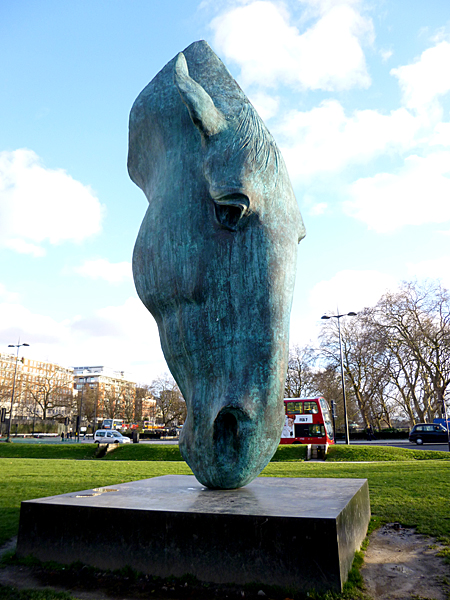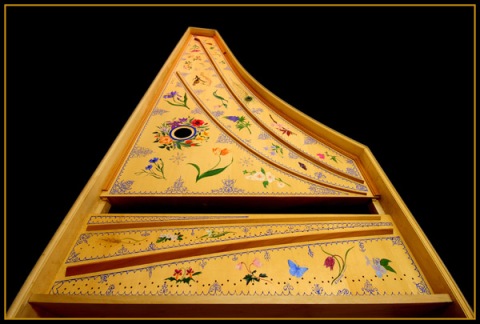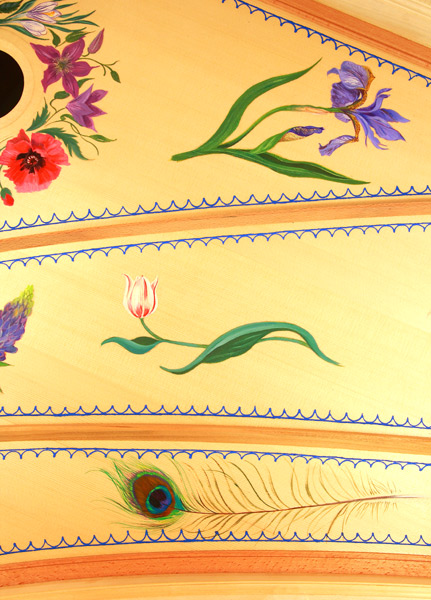Transition and tending time
May 10, 2014
I just want to mention that I have 2 other WordPress sites.
Tendingtime is my transition blog- the story of my personal reflections and experiences as I navigate a period between life phases, professional identities, and lifepurpose. At first I chose to locate it away from artcalling because it really wasn’t about profiling as a working professional, but rather a more vulnerable venue for musings when moving away from a particular professional identity.
I also still meet prospective customers who want to see what I do, and was not quite ready to publicly reveal my profound sense of alienation from previous design, illustration and calligraphy commissions and deadline work on this blog.
Anyway, I paint regularly, teach and write, and am involved in some activism locally, so it isn’t as if I no longer work.
Now I am more certain of the kind of work that beckons me, I am less concerned about coming across as less credible to the aforementioned type of customer. I sense that my future work will take the form of collaborations with other artists and creatives in a similar phase to my own, and that once and for all any kind of professional posturing won’t be demanded of me.
So maybe I will in time, move tendingtime over here. It is an increasingly important part of my life and reflects honestly where I am on the subject of alternative paths for the arts. This last subject is why I started artcalling 7 years ago.
My other wordpress site, Artwell, contradicts nearly everything I just wrote, and is a showcase for my work. As well as being a gallery for my current oil paintings, I see it as a document of past achievements which I am proud to share. There is calligraphy, harpsichord decoration, oil pastel drawings, etc.
I wish Tendingtime had more of a readership. Having been spoiled on this blog with over 200 followers last time I checked, I’d forgotten how long it takes to build up a readership without being on Facebook or Twitter. What excites me though, is that that blog is connecting me to others with a similar philosophy and experience. Those are such rich connections and I am grateful for them. Rather one of those than 100 of the ‘I follow you will you follow me?’ kind.
So please go over to Tendingtime if you are interested. I am also using that blog to document walking ‘The Pieterpad’, my 480 km journey (in phases) from the northern to the southern tips of Holland.
Horse sculptures, friendship, pianos, and more
March 9, 2014
One nice thing I did when I was in England last month was to meet up with a fellow blogger I had previously only met virtually. Sonia found my blog through our common work of painting harpsichords. I paint sound boards and she decorates the cases- two entirely different specialities. Sonia’s skills involve hard physical work sanding and finishing large areas, as well as gold-leafing and faux finishes. Mine entails designing and painting flowers.
Anyway, we became online friends and have followed each other’s projects for awhile. I was really impressed when Sonia conceived of, wrote, and self-published her travel, photo, and cookbook, ‘Androula’s Kitchen, Cyprus on a plate’. And when we met in Brighton, she told me of the doors this has opened for her to new opportunities such as lecturing and cooking demonstrations.
Neither of us are out for the fast bucks, and subsequently are discovering the hidden treasures that come from doing something well because you love it. Then gifts come pouring in- experiences that lead to making new friends, developing new abilities, and building community. It is inspiring to share stories.
Below are a few more general shots from the London part of the trip.
Above a detail from one of my most heart-lifting sights in London, the meters high horse head sculpture at Marble Arch. The first time I saw him while passing by on a bus, he took my breath away. And this time I made a point of getting up close.
One of the snazzy new double deckers:
Another horse’s head sculpture I stumbled across near Oxford St.
One of the other things that made me smile every time I saw it was the placing of public pianos in various locations inside St Pancras International railway station. They were there for anyone to play, and there was always someone noodling away- sometimes shyly, sometimes performing, sometimes good , often haltingly searching out the notes. I loved the idea. There is always live music now when you walk along the busy indoor shopping boulevard, it makes it warm and homey instead of impersonal like an airport lounge.
And finally, here is the outside of St Pancras on my last day in the UK, the sun finally came out! I adore this building, it is the old Euston station, and part is now a posh hotel. I always like looking out on the warm red bricks from the hostel, which is the building on the right hand side of the photo. Across the street, not shown is the British Library. Despite the heavy traffic on Euston Road, I love this area, it is busy and vibrant and a great mix of architecture and things to see.
- St Pancras station and Hotel
Harpsichord song board painting done
March 3, 2012
Well, the painting of the song board is completed. Johan came to pick it up this past week.
The etalage is incredibly empty. It was like having a friend there, a real presence, waiting every morning. I’d look at the work of the past day and plan what the steps for today would be- and by some miracle, flower by flower by flower, it all got done.
It took close to 80 hours spread over 8 weeks, not counting the planning and design. Those hours aren’t all painting time, they also include drawing, transferring, some research, and reworking some flower drawings.
I always have a bit of resistance to adding the final blue arabesques, those clumps of curls and swirls around the edges. I’d prefer a more streamlined look. But the blue decorations are trademarks of these Ruckers Flemish instruments from around this time (1638), so they are not optional. They are fun to do, and the artist can hide all kinds of inside jokes in the complicated strokes. You may be able to spot a few that are not just designs but contain figurative elements. Once I hid a bike, a mermaid, and even a boxer (dog).
The lines, scallops and arabesques are done with an applicator so that they will be raised in relief. Originally this was done with a mixture of cobalt glass and casein binder. I use gouache and casein with a smidge of acylic gel for elasticity.
Here are Johan and I, Johan has just finished playing air harpsichord, Bach’s flower concerto I think.
And now the instrument is back with its creator, Matthias, who will add strings, keyboard and base, several layers of paint (on the outside!!!) and other finishing touches. All of us involved with the birth of this instrument are enjoying seeing it come alive as each person does his/her part. It is one of the most rewarding (and intense) projects I’ve worked on. I’m so grateful it is safely back in Germany in Matthias’ workshop.
Harpsichord days, a really unique project
February 14, 2012
All photos by Rende Zoutewelle
Well, it is an all-consuming project. I do have a life….I think. But I basically wake up and go to sleep thinking about which flowers fit where, color balance, leaf size contrasts etc.
Rende’s photos have captured some of the atmosphere of the étalage (aka shop or oil painting studio) where I’m working on the instrument. It is a small space – not even enough to walk completely around the case. A new instrument like this needs to be kept at an even temperature and humidity to prevent drying out, so it is on the chilly side – about 15 degrees centigrade. I wrap up well before I go to ‘work’.
Despite that inconvenience, I do like having it all concentrated down here, the previous ones took over my entire attic studio. That meant I really couldn’t do anything else.
Johan said that with the sound board being painted, the instrument is starting to come alive.
As soon as it was brought here, I felt it already had a soul from the amazing amount of love and care that the builder, Matthias, had put into it, and from all the thought that had gone into it even before the case was built. Now that I’m adding my part, there is such a strong visual emphasis, it is hard to remember that
the real soul of this instrument lies in the sound it will make.
Anyway, it is a really cool project to be involved in. I have to slow down to paint each plant and animal portrait as if it were the only one. And one by one they are forming a whole painted songboard.
Definitely connected to the long tradition of songboard painting, and yet also belonging to the 21st century in the choices we’ve made, both visually and in content. For example, Johan had requests for various flowers and other elements to be included which are personal symbols connected to his own life. For a few people, beside the aesthetic quality, there will be added layers of meaning to the things painted on the instrument.
When it goes back to Germany at the end of the month, Matthias will make the keyboards (there are two) and attach the strings. And then it will be able to sing.
Hanzeclavecimbel progress
January 28, 2012
The above photo is from a previous instrument painted in 2007 (made by H.van Gelder). The ‘rose’ is not yet added, the rose is a metal, usually gold-leafed, emblem of the particular instrument builder.
Because of the labour intensive nature of painting the harpsichord, I’ve not had the time/energy to blog. But I’ve got everything set up and am painting now, so there is a moment to touch in.
The above photo shows a fairly classical treatment of the rosette wreath around the sound- hole of these 17th century Flemish harpsichords.
Johan, my client (and new friend), wanted a slightly different take on it. Indeed, the whole harpsichord is shaping up to be firmly rooted in the best tradition, yet entirely of this age as well.
As I mentioned before, there are at least 3 of us directly involved with the hands-on birthing this instrument (plus there are many more supporters of this project behiind the scenes): Matthias Griewisch, the master builder/creator: Johan Hofmann, accomplished harpsichord player, musician, and teacher; and me, Sarah, the sound board decorator/flower factory. And each one has their craft and input. The collaboration is fun and inspiring. (Johan on left, Matthias on right).
Where this is all leading to is that the rosette wreath is done. On this instrument it is flowerless. Johan chose for bay leaf and ivy. Here it is, Compare it to the one above, it has a whole different feel.
Photos of harpsichords by Rende Zoutewelle. Photo in workshop, Bert Kiewiet
Hanze harpsichord/Hanze clavecimbel
January 5, 2012
In December 2010, Johan Hofmann a respected Dutch harpsichordist and teacher, contacted me about an exciting project. He was having a new instrument made by Matthias Griewisch. Griewisch is considered by some to be one of the best period instrument builders working today. My part in this would be to paint the songboard full of flowers as is traditionally done with Flemish keyboard instruments from around the mid-1600’s. The image below is of an instrument made by Herwil van Gelder for Jan Dirk Immelman. I painted it in 2007.
I am deeply honoured to be involved in this project. In August last year I went to Edinburgh’s Museum of old instruments, St Cecilia’s and studied the original, unrestored version of this rare double manual harpsichord.
Johan and I (and Matthias via Johan) have been brainstorming about this instrument for a year now- how it would look, what we wanted to keep from the tradition, what we could change to reflect the times we live in as well as Johan and Matthias’ aesthetic preferences. And of course my sense of how this would all influence the sound board decoration.
It has been a fun and exciting collaboration so far, punctuated by dinner out on the terrace here, a pastry-filled birthday meeting, and climaxing in Johan and friend Bert’s return from Germany yesterday and the delivery of the ‘case’. (The case is the upper body of the harpsichord containing the songboard- the strings and keyboard will be added later).
It is so beautiful. It is just so beautiful. (I’ve been listening a lot to Aerial by Kate Bush, these words should be heard as music, they are about 45 seconds into the video).
It/she/he already has a soul. Here is a picture of him/her under wraps, awaiting adornment with garlands, flowers and arabesques. This will take about 6-8 weeks.
More will be revealed later.
Harpsichord 6-flower by flower
September 15, 2007
Decorated harpsichord sound board completed, photo Rende Zoutewelle
It was truly a delightful process, perhaps because there was such a warm contact with the clients and instrument maker. It is always a pleasure to work for/with someone rather than deliver a finished work to an anonymous buyer. (One of the reasons I stopped being a gallery artist).
Also, my husband documented the whole process on his photo site and there was a lot of wonderful feedback and encouragement from that group (thanks folks!).
So my studio is gloriously empty, but more importantly, after an intense 6 week involvement with a project like this, so is my head.
Although I must say that having a concrete project to do was a welcome break from my current focus; getting a new idea off the ground (in this case creating work for myself as an artist in healthcare) involves so much headwork. And all the planning, following up contacts, writing proposals is so abstract and up until now has not led to anything structural. While painting the sound board flower by flower eventually led to tangible results and a FINISHED PROJECT!
Well, for me anyway. Herwil now has to do his magician’s work and conjure the painted wood into a singing instrument.
Harpsichord 5
August 31, 2007
The sound board is nearing completion. The harpsichord itself, all 2 meters of it, is on my long worktable and the reference material is spread out all over the room. Most of my materials are on a rolling table. I am enjoying the work but I’ll be glad to get my studio space back when it is done. Also, the instrument builder is waiting for it in order to continue construction. It has meant putting on a final push this week, and there were days where it seemed like the work needing to be done was never-ending. There are 40 hours invested in it so far.
At the end of a project like this there is an extra burst of energy that carries you through to completion. I do find, though, that being in the grip of it eclipses everything else. It is a mixed feeling giving in to the drive to finish something; on one hand you are carried by the momentum built up over the weeks of concentration, on the other hand there is very little room for anything else (for instance, the rest of life…husband, puppy, other commissions, social life…. etc.).
It is a great feeling though, after focusing on minute details for all those hours, to look out over the decorated board and see it as a whole. The painting process has been sensually pleasurable as well, I love working on the warm, live surface of wood, I can use drybrush technique to finish and blend colour layers subtly, and for instance, the peacock feather works particularly well using this method.
Harpsichord 4
August 26, 2007
Harpsichord 3
August 21, 2007
photo Rende Zoutewelle
The positions of the flowers are laid out on pieces of tracing paper. One by one I transfer them onto the board, then block in the main colours.
According to some historians, Flemish harpsichords of the 17 th century were painted exclusively in water-based pigments. This made the songboard exceedingly fragile, but when it comes to water, the whole instrument is vulnerable anyway.
I worked with gouache for the first 2 instruments I painted. Then one night, when I had a songboard in process, it rained and there was a leak in my studio. Fortunately, water only splattered near the board, but that was the deciding point for me. The next intrument I did was painted in egg-based tempera. It looks like gouache, but it dries hard and mostly waterproof. Luckily it is available ready-made in tubes here in Holland.
So the painting has begun, it is very enjoyable work. My sable brushes are sharp and flexible, the colors used are vibrant, and flowers are such accommodating subjects.
Pictured is the underpainting of the rosette wreath around the sound hole of the instrument. The flowers and leaves are first painted quickly in approximate colours. Then when I’ve worked sketchily across the whole board, I’ll start to pull the colours together and work on details.





























